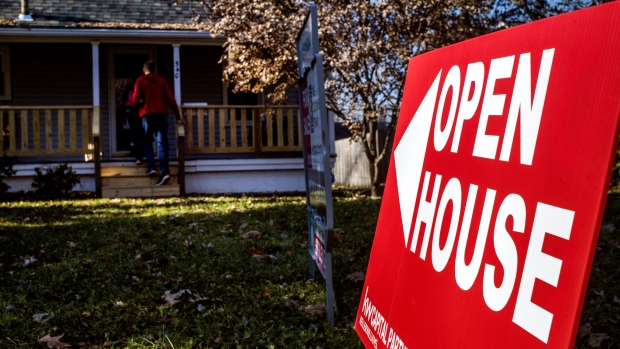
Singapore Home Price Growth Slows, Rents Decline as Market Cools
Singapore home prices grew at a slower pace last quarter and rents fell, as the city-state’s property boom began to lose steam.
Latest Videos
The information you requested is not available at this time, please check back again soon.

Singapore home prices grew at a slower pace last quarter and rents fell, as the city-state’s property boom began to lose steam.

Hong Kong home prices rose for the first time in almost a year in March as the city’s removal of property curbs revived sales.

Greater China’s property market crisis and the challenges it poses for lenders will be on full display on Monday, when embattled developer China Vanke Co. and the region’s biggest banks report earnings.

China’s overseas investment is heading for an eight-year high as its dominant firms build more factories abroad, a shift that could soften criticism of Beijing’s export drive.

The Related Cos. founder is following the money flowing south by bringing his influence to everything from real estate to schools and health care.
Jun 25, 2018
, Bloomberg News

U.S. purchases of new homes advanced in May to a six-month high as sales in the South increased to the fastest pace since 2007, according to government data released Monday.
Single-family home sales rose 6.7 per cent m/m to 689k annualized pace (est. 667k) after 646k rate (revised from 662k) Median sales price decreased 3.3 per cent y/y to $313,000 Supply of homes at current sales rate fell to 5.2 months from 5.5 monthsKey Takeaways
The stronger-than-forecast gain in U.S. sales reflected a 17.9 per cent surge in the South, the nation’s largest region, to a 409,000 annualized pace. While that was the strongest in almost 11 years, demand was mixed in other parts of the country.
The report also showed a six-month high in the number of homes sold but not yet started, indicating residential construction will continue to boost growth. What’s more inventory remains lean. The supply of home available at the current sales pace fell to 5.2 months’ worth, the lowest since November.
The pickup in contract signings is an indication that a build-up in home equity tied to rising property values is benefiting trade-up buyers. Demand also remains underpinned by steady hiring and lower taxes.
At the same time, prospects for first-time buyers and those with modest incomes have deteriorated. Mortgage rates near a seven- year high and home prices that are rising much faster than wage growth remain obstacles for these Americans.
The cost of borrowing may continue to creep higher. The Federal Reserve boosted interest rates by a quarter point in June and increased to two the number of additional hikes possible this year.
Data on existing homes released last week showed that sales unexpectedly fell in May for a second month as an inventory crunch pushed prices up and left buyers, particularly first- timers, on the sidelines.
Other Details
Purchases fell in two of four U.S. regions, including an 8.7 per cent decline in the West and a 10 per cent drop in the Northeast; sales unchanged in Midwest New-home sales, tabulated when contracts get signed, account for about 10 per cent of the market. They’re considered a timelier barometer than purchases of previously owned homes, which are calculated when contracts close and are reported by the National Association of Realtors The new-home sales data are volatile on a month-by-month basis, with the Commerce Department saying there was 90 per cent confidence that the change in May ranged from a 7.4 per cent drop to a 20.8 increase Report released jointly by the Census Bureau and Department of Housing and Urban Development in Washington